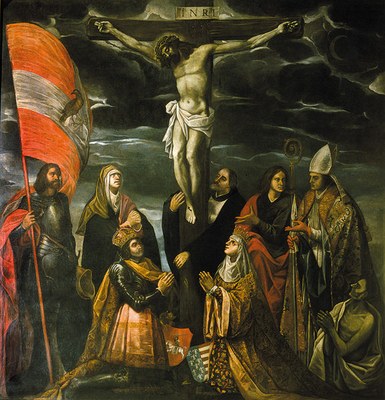Władysław II Jagiełło (ca. 1348–1434) and Hedwig of Anjou (ca. 1374–1399)
erstellt von
—
last modified
2020-05-25T11:31:49+02:00
Muzeum Uniwersytetu Jagiellońskiego Collegium Maius
Muzeum Uniwersytetu Jagiellońskiego Collegium Maius
Tomaso Dolabella (1570–1650), Władysław II Jagiełło (ca. 1348–1434) and Hedwig of Anjou (ca. 1374–1399) beneath the cross, oil on canvas, 17th century; image source: Muzeum Uniwersytetu Jagiellońskiego Collegium Maius. http://www.maius.uj.edu.pl/

